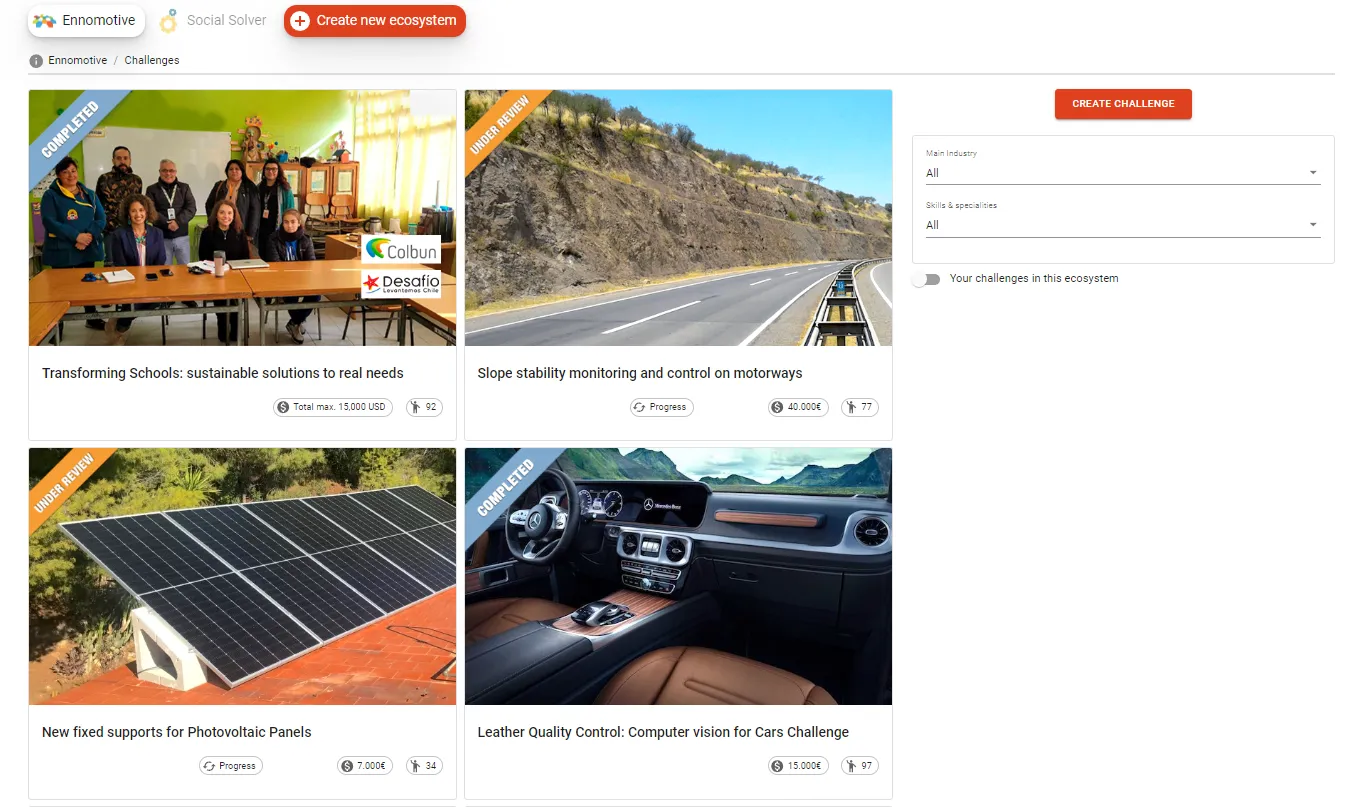Background
Grupo Antolin is one of the largest players in the car interior market internationally and first global supplier of headliner substrates. Grupo Antolin started its business journey in the 1950s as a mechanics garage in Burgos, Spain, and today it has become a leading multinational company in the development, design and manufacture of interior components for the automobile industry with a long industrial tradition and mastery of a broad technology portfolio.
The company is a key reference in the automotive sector, offering products with high added value to outfit automobile interiors: Overheads & Trunk Trim, Doors & Hard Trim, Lighting and Cockpits & Consoles. GA is a profitable, competitive company established in 25 countries where more than 30,000 individuals provide their skills. Creativity, leadership and client satisfaction continue to be the core values of the Company today, which are the best recipe for success in the future.
The challenge
Air pollution is one of the most frequent and well-known environmental problems. It is not surprising that air quality in vehicle cabins is usually worse than air at home or at work, especially when so many exhaust pipes are only inches away from the adjacent vehicles.
Pollutants find their way into the cabin via:
● The ventilation system, or HVAC.
● The window openings, imperfect seals or other holes.
In addition, other mobility paradigms like car sharing are changing the traditional use of private automobiles, opening the door to a more intensive use and contributing to a bad air quality in vehicles.
Pollutants could be present in the interior cabin by other means such as:
● The emission of interior parts or systems in ambient temperature (VOCs, O3…).
● The human breathing process combined with a lack of fresh airflow resulting in low O2 and high CO2 concentrations.
● The intensive use of the car in new shared mobility (microbes, allergens, smells…).
● The presence of humidity in the seats / floor / HVAC (stimulating microbial growing)
Air quality is perceived as good when the content of particles / pollutants is under certain limits. See Annex 2 attached.
What the client is looking for
Grupo Antolin is looking for a complete air quality management solution to be implemented in the interior of the car. It needs to assure the quality of the interior air regarding some of the following pollutants (in order of importance):
1. VOC (Volatile Organic Compounds): such as BTEX, Chlorinated compounds, Polycyclic aromatic hydrocarbons…
2. Chemical Pollutants: such as Carbon Mono/Dioxide, Nitrogen and Sulphur Dioxide.
3. Particulate Contamination
4. Microbial Contamination: such as viruses and bacteria.
5. Allergens.
6. Smells such as cigarettes, food…
The solution must consider some of the following key requirements, considering either, access of pollutants into the cabin, or air treatment for its quality improvement:
● Active / passive elements to measure the air quality of the interior of the car cabin, based on certain variables or a combination of them. Measurement technology must be selected by the solver according to the evaluation criteria stated further on, and properly justified.
● Active / passive control solution to assess the adequacy of actuation on the air quality.
● Passive / active actuation system that enhances the air quality in case of a harmful situation.
● Low consumption.
● Low cost.
● Minimum Lifecycle of 10 years.
The system may be integrated, in whole or in part, in the GA’s components.
Evaluation criteria
Submissions will be assessed according to the following criteria:
● Technical solution considering the complete system: measured parameters, compliance with the requirements and adaptability to different car models, climate and environmental conditions.
● Ability to estimate the air quality.
● Ability to reduce/eliminate as much as possible, as many pollutants as possible (in order of importance). Consider the different sources of pollutants and the different time/process for their development
● Lower estimated costs for producing the solution.
● Lower estimated energy consumption for running the solution.
● Lifecycle addressed solution.
● Originality
This is a 1-round tournament with the following submissions:
PDF Document including:
● Description and models/sketches of the proposed solution.
● Solution rationale of how the proposal evaluates and enhances the air quality.
● Feasibility evidence of the defined solution to be compliant with the requirements.
● Estimated solution costs.
Estimated solution energy consumption.
Tournament Structure and Timeline
This is a one-round challenge with the following deadlines:
● 6 weeks + 3 weeks for evaluation



